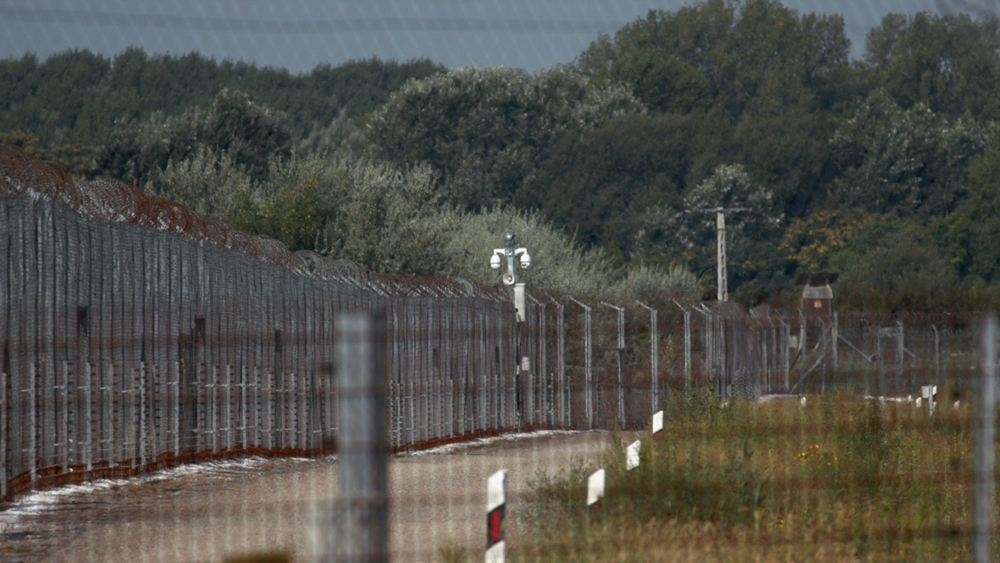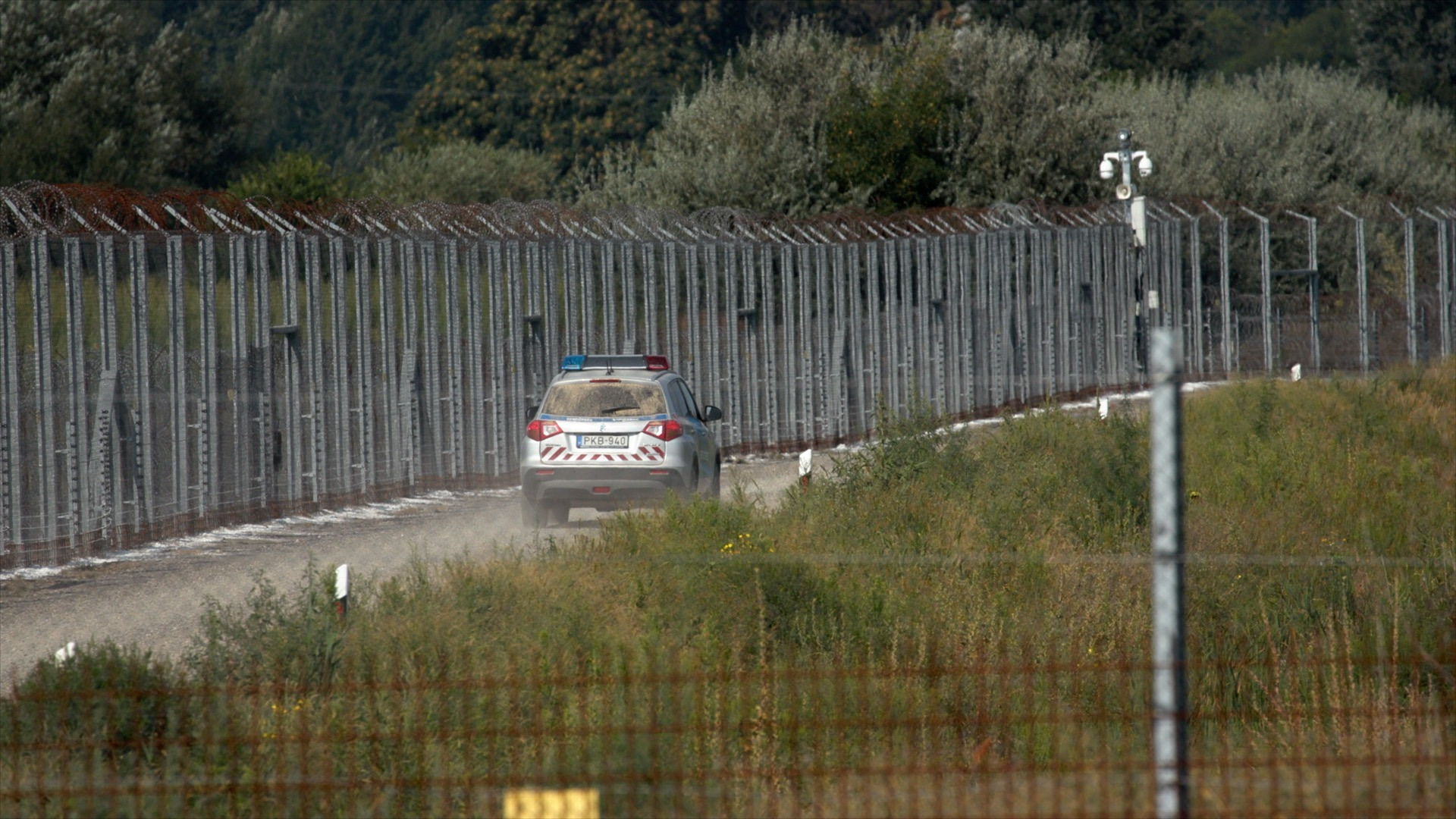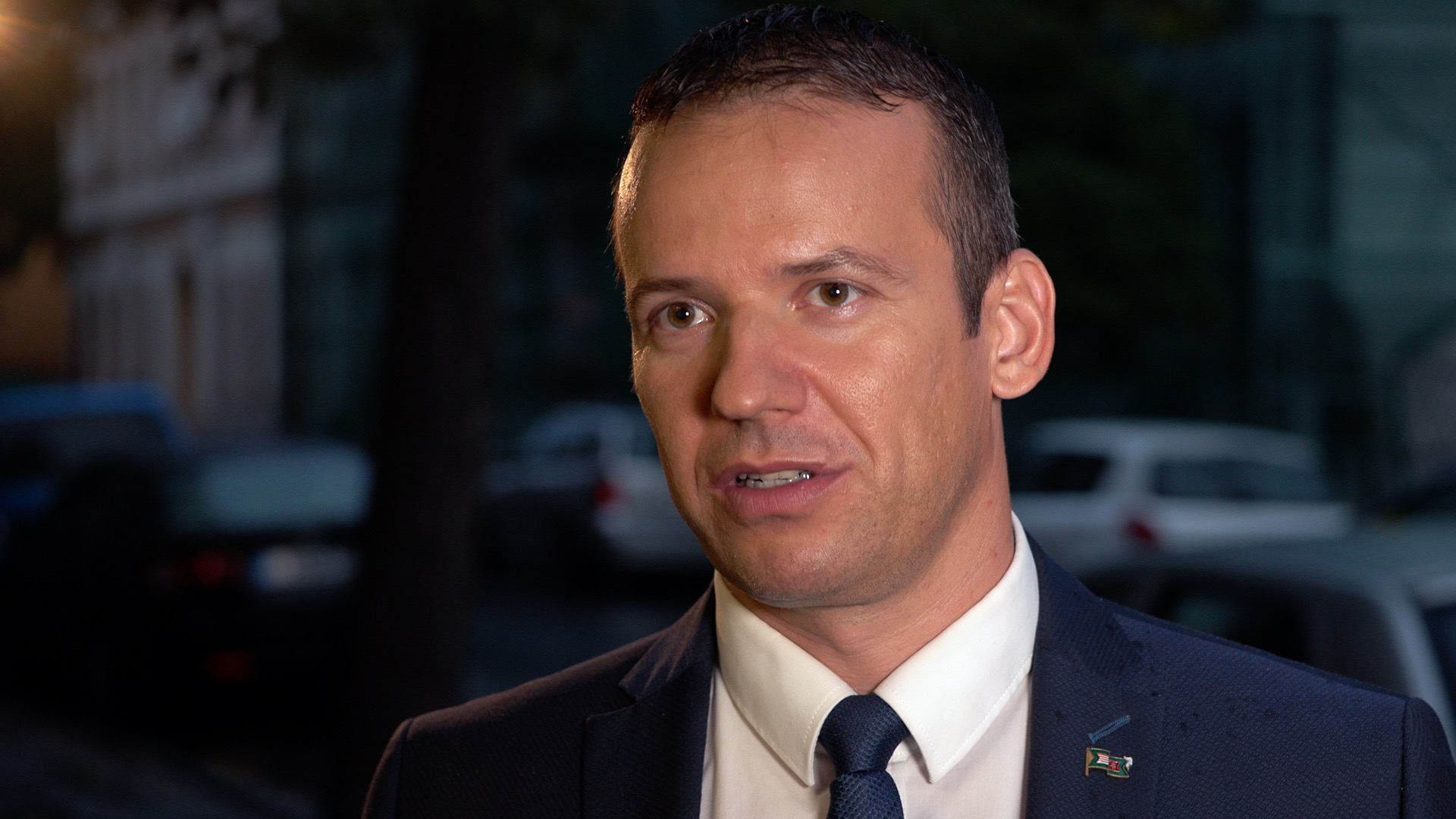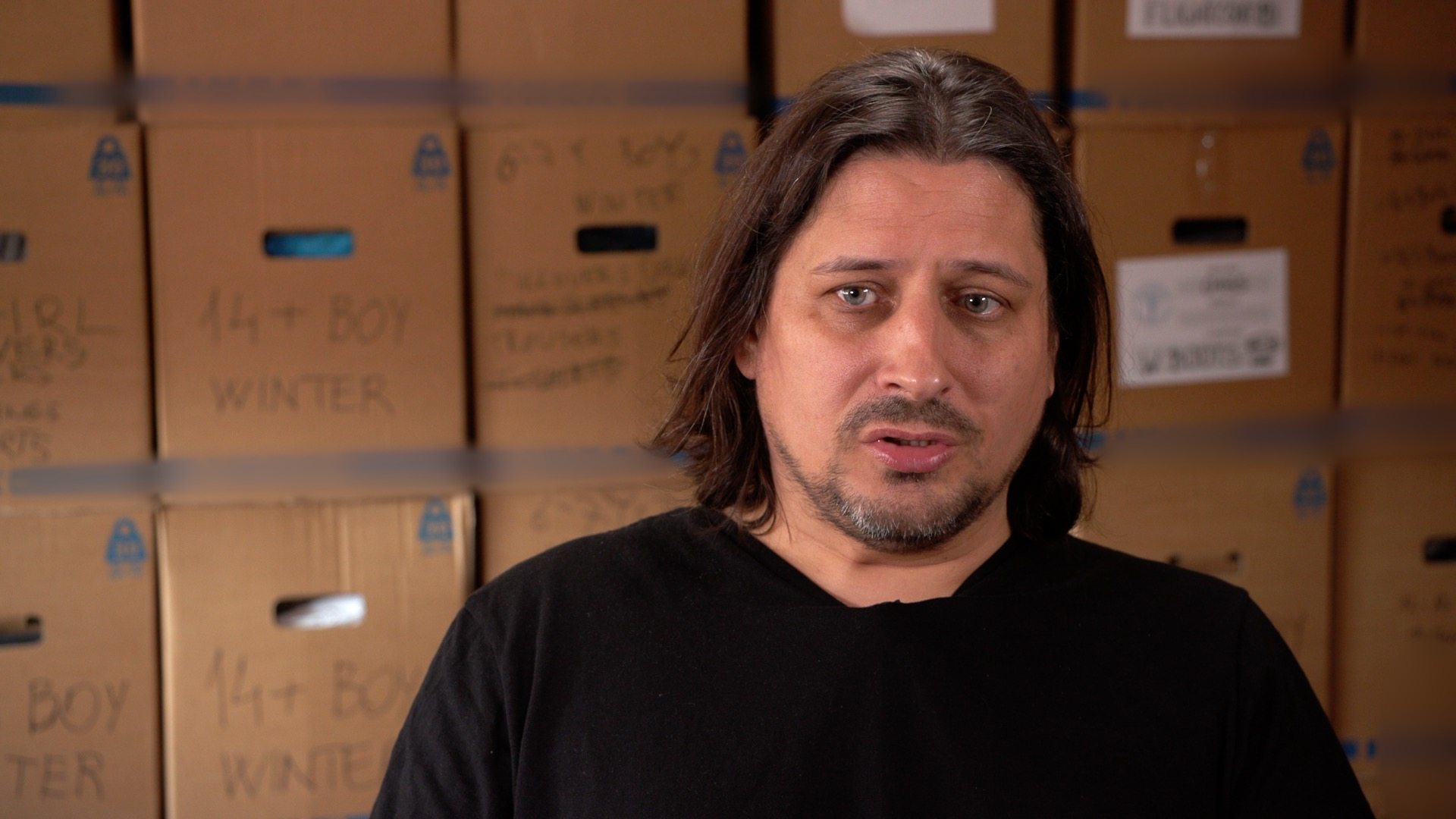
World
12:08, 20-Aug-2018
The wall that has changed the face of Europe
Updated
11:56, 23-Aug-2018
By Aljosa Milenkovic

It's exactly three years since Hungary started building an anti-migration fence wall along its border with Serbia.
In September 2015, at the height of the migration crisis, almost 140,000 people crossed the border in a single month in an attempt to reach Western Europe.
The flow of people crossing that border illegally to seek a better life has dropped dramatically, but the border fence is still controversial.
We went to the Hungarian border with Serbia, close to the town of Roszke. There are two, 4-meter-high wire fence walls with a sizable stretch in between them, enough to host a wide road. It is used by the border police on routine patrols along the border with Serbia.

Local police patrol along the Hungarian border fence at the border with Serbia. /CGTN Photo
Local police patrol along the Hungarian border fence at the border with Serbia. /CGTN Photo
In the hour we spent there, patrols crisscrossed that road a number of times. They were driving only in this section of fence, which in total stretches for 175 kilometers, covering every meter of Hungary's border with Serbia. And it was the first border fence to be erected in post-Cold War Europe.
Around 25 years earlier, there was another fence, very similar to this one, but on Hungary's border with Austria. That fence was meant to protect this part of Europe from Western ideology.
This fence was also conceived as a way to protect this part of Europe. But not, as those who created it claim, from outside ideology, but from those trying to alter the local way of life.
At the forefront of the movement claiming to protect Hungarian traditional values was Laszlo Toroczkai, the mayor of the small Hungarian border town of Asotthalom, which is just few kilometers away from Roszke.

Laszlo Toroczkai, mayor of Asotthalom. /CGTN Photo
Laszlo Toroczkai, mayor of Asotthalom. /CGTN Photo
Toroczkai was the one to come up with the idea of building this wall and he also organized patrols with his supporters in a bid to help Hungarian authorities control and stop illegal migration.
They even filmed a promo video, to discourage anyone considering crossing into Hungary from Serbia. At the end of that video, Toroczkai warns migrants not to go through Hungary on their way to the West, saying: "Hungary is a bad choice. Asotthalom is the worst."
We met Toroczkai in Budapest after he was a guest at the local TV station, promoting his political positions. Three years after the peak of the crisis, there is little if any change in his position on illegal migration.
"Not only is mass migration bad for Hungary, but it's bad for all of Europe,” Toroczkai said. “It can lead to many problems, bloody conflicts, great tensions in society. We see that parallel societies have been created in Western Europe. Islamization is going on in Europe. I am very proud that the idea of building a fence and protecting the border came from Asotthalom, and that the Hungarian government supported it."

Andras Siewert, director, Migration Aid NGO. /CGTN Photo
Andras Siewert, director, Migration Aid NGO. /CGTN Photo
Fence is just a symbol of society walls
Although it is widely supported, the border fence is not praised by everybody in Hungary. Many say it fuels xenophobia, which is increasing in Hungarian society. Andras Siewert, director of Migration Aid NGO, is one of them.
"It is obvious that it is on the rise,” Andras said. “We experienced this firsthand last year when we tried to take some refugees on a holiday to Lake Balaton, for a few days, but we weren't able to. We received donations to take them to a summer house there, but locals strongly objected. And the local MP together with local mayors stepped in, promising not to allow refugees come there even for a holiday."
Opponents to the border wall also claim its main purpose is to help the ruling party score points in the domestic political arena. But one unavoidable fact is that the construction of the fence dramatically affected not just Hungary, but all of Europe.

SITEMAP
Copyright © 2018 CGTN. Beijing ICP prepared NO.16065310-3
Copyright © 2018 CGTN. Beijing ICP prepared NO.16065310-3